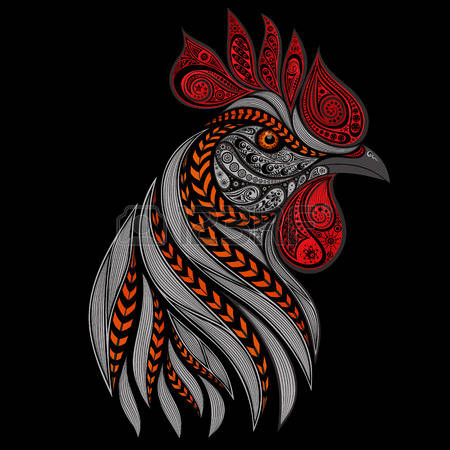Who are You Calling a Rooster?

The Chinese zodiac has long captivated people across the globe, but with its fame have come some misconceptions. Like, isn’t the Chinese zodiac just a rip-off of the Western zodiac? It’s not! Yes, the Chinese version, or shēngxiào, is “only” 2,000 to 2,500 years old to the Western’s approximate 5,000, but the two developed independently and have slightly different characteristics.
The Western zodiac operates on a roughly thirty-day cycle and revolves around twelve star constellations––Aries, Taurus, Gemini, Cancer, Leo, Virgo, Libra, Scorpio, Sagittarius, Capricorn, Aquarius and Pisces––some of which have animal symbols. The shēngxiào, however, is comprised entirely of animals: the Rat, Ox, Tiger, Rabbit, Dragon, Snake, Horse, Goat, Monkey, Rooster, Dog, and Pig. These animals are associated not with twelve two-hour increments of the day, a practice that arose as a way to record time. People would say something to the effect of, “in the period of the Goat,” rather than “between 1 p.m. and 3 p.m.” Later, as the need for specificity grew, the Chinese adopted the 12- and 24-hour systems in use today.
In addition to denoting hour periods, the shēngxiào also records years on the Chinese lunar calendar, which begins on the second new moon before the March equinox. Each year in a twelve-year cycle is associated with one of the zodiac animals, and 2017 is, therefore, known as the Year of the Rooster. Next year, 2018, will be the Year of the Dog, 2019 the Year of the Pig, and finally, 2020 will begin a new cycle with the Year of the Rat.
This arrangement is not by chance. The shēngxiào is ordered according to the animals’ number of toes, claws, hooves, etc., whether even or odd, and the Chinese call this the animals’ yin and yang. Since the Rat is unique in having four front toes and five back toes, it places first, with the rest of the animals following after in an alternating even-odd pattern. Many aspects of Chinese culture relate to the yin and yang balancing act.
Nevertheless, while animals comprise a significant portion of the shēngxiào, there is another, just as important, aspect: elements. The Chinese culture recognizes five elements, those being Gold (representing metal), Water, Wood, Earth, and Fire, and the pairing of element to animal changes the zodiac’s meaning. For example, 2017 is the Year of the Fire Rooster, whereas 1993 was the Year of the Water Rooster. The people born in 1993, therefore, are thought to inherit different characteristics of the Rooster than the ones born in 2017.
Both zodiac year and, even more so, hour are used in the Chinese culture to explain and predict one’s life, personality, and relationships. In the past, people’s zodiac compatibility helped them determine whether to pursue relationships with each other, whether that meant a marriage or a business partnership, but this practice has since fallen out of widespread use. Today, people generally use their zodiac year as a guide for fortune and luck. Having one’s zodiac year come around is not always a happy occasion, because with it is thought to come more challenges and hardship than usual. To ward off such misfortune, some people wear red clothing or red jewelry, as the color is considered lucky in the Chinese culture.
Whether you believe in inherited characteristics or the ability to predict your future based on your birth year, learning about the shēngxiào can be a fascinating study. If you’re intrigued, check out our Chinese Zodiac poll and discover what your zodiac is! It just might surprise you.


